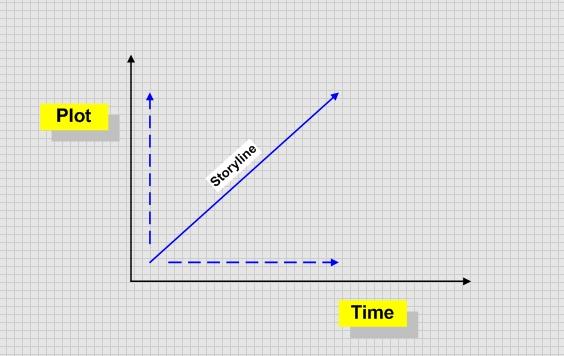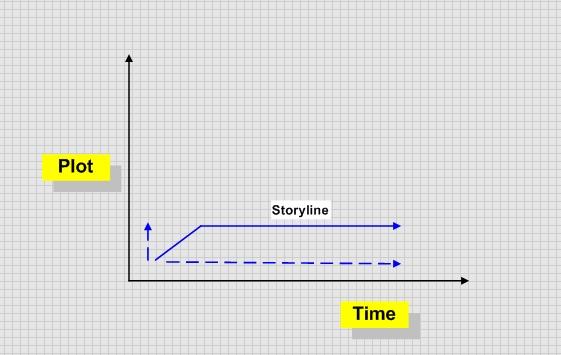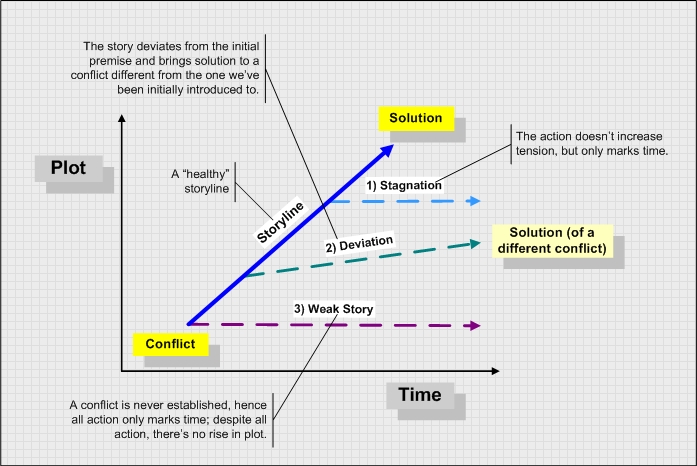Trending
Opinion: How will Project 2025 impact game developers?
The Heritage Foundation's manifesto for the possible next administration could do great harm to many, including large portions of the game development community.

Featured Blog | This community-written post highlights the best of what the game industry has to offer. Read more like it on the Game Developer Blogs or learn how to Submit Your Own Blog Post
In this article on mechanics that artificially lengthen gameplay I explain why not all motivational game mechanics are necessarily engaging and might feel like they are wasting our time.

It happens all too often that we lose our motivation exactly because of the mechanics that were supposed to achieve such motivation. I believe that one of the reasons for this is that game designers have too much faith in reward systems and do not tie them strong enough to narrative structures that foster a strong sense of game progression. In the first part of this article I will address the concept of climbing tension in order to explain the forces behind a strong sense of progression. Later on I will give examples from cases in which the climbing tension principle is ignored and what impact this has on player experience.
What Keeps Players Moving?
Climbing tension is one of the oldest and most valued principles in drama. It denotes the piling up of pressure on the protagonist during her struggle to defeat her opponent(s). Usually the pressure will continue to pile up until the story reaches a climax. The protagonist will be then given a relief through a solution which sets an end to the conflict [1]. We experience such pressure in casual games like Tetris and Zuma, or in more complex games like Counter-Strike, where we watch our team members being shot one by one until we are finally left all alone in an hostile environment with lethal enemies just waiting behind the corner.
Expressed through a graph, we can visualize climbing tension as something that works on the vertical axis and therefore is concerned with rise of plot. In other words, in order to have climbing tension it is not enough that events mark time (progress on the horizontal axis only), but their development must also equal to a rise in plot and translate into a further step towards the solution of the conflict.

Dramatic Structure
Necessity (facing an inescapable threat) is usually what gives the story the momentum that makes the vertical axis work. The protagonist would keep struggling until the threat (or herself) is eliminated. Once the solution of the clash between protagonist and threat has been reached, the driving force behind the vertical axis is exhausted and the climbing stops.
The Scope of Dramatic Tension
This sort of dramatic structure can be installed over a variety of scopes. For example within a single act (or, within a scene) it would consist of
the set up of the character’s particular goal for that scene;
the actions she carries out to reach the particular goal;
the answer to the posed problem (whether she reaches the particular goal or not).
Typical examples would be game levels in Mario, Diablo or Medal of Honor. But we can observe the presence of such a structure on smaller or larger scales too. For example the particular actions within a scene might have climbing tension: will I be quick enough to place this falling block into that slot? On a larger scale on the other hand (between scenes for example), it means that with each new scene something is added to the problem that had been brought onto that level of complexity through previous scenes: the cup final in the Konami Cup in Pro Evolution Soccer has been reached after many tough matches and it's such a shame that our most important striker is suspended for it due to the yellow card limit he reached because of a stupid foul in the previous match.
These examples allow us to say that climbing tension is a matter of causality, of creating a causal chain that brings increasing complexity to an initial problem [2]. Motivation is firmly established within the necessity that the plot structure generates. The reasons that keep the player moving feel real to her. As a result engagement and immersion are reached.
The Boredom of Pure Action
Often writers and designers will confuse “pure action” with climbing tension. They will think that the more guns explode (the more swords are swung, the more people die etc...) the more tension we have. This is wrong. It is often the case that such scenes will only equal to progress in time, but as we've seen already, progress in time does not necessarily translate into a rise in plot. Actually in many cases it is an invitation to boredom and frustration. Consider the following example:
An ill-minded man with a butcher knife in his hand secretly enters the bathroom of a young woman which, unaware of all this, is taking a shower. With a sudden move the man opens the shower curtain and frantically stabs the young woman to death. Just as he’s finished, he realizes that a neighbor, an old prostitute, has witnessed the scene. He immediately goes to the neighboring home and kills her. Just as he’s finished, he realizes that another neighbor, a middle-aged nun, has witnessed the scene. He immediately goes to the neighboring home and kills her. Just as he’s finished, he realizes that another neighbor, a young cheerleader, has witnessed the scene. He immediately goes to the neighboring home and kills her. Just as he’s finished, he realizes that another neighbor, an old cleaning lady, has witnessed the scene. He immediately goes to the neighboring home and kills her.
We have a lot of “pure action” in this sequence. However, instead of giving a feeling of progress, after the murder of the first eyewitness the action start to feel like it marks time. The reason for this is that the action after the murder of the first eyewitness does not cause a rise in plot and brings stagnation to the story. The action causes progress on the horizontal axis (Time) only, but does not seem to contribute much to progress on the vertical axis (Plot). Expressed through a graphic, the storyline looks like this:

Lack of Game Progression
A lot of games seem to suffer from this problem. The repeating action does not contribute to a rise in the plot [3]. However, the problems that come when action does not help increasing tension get worse when the resulting stagnation is combined with a badly designed reward schedule. In that case, not just the story feels frustrating, but also the achievements that we unlock through repeated action fail to feel rewarding. This can have various reasons:
the reward feels too insignificant or does not translate in any usefulness in regard to overcoming the game's challenge
the system that denies us to get the reward earlier feels fake or arbitrary or biased towards the business model
the reward is in a too far future and feels relatively insignificant because we can't see the immediate result of our actions.
Whatever the reason is, it is a very frustrating situation for a player since all action seems to be completely stripped from any meaning. In other words, failure in both increasing tension and meaningful/functional reward will be devastating for the player's experience and a sure way to see her quit playing.
Conclusion
Increasing tension is a very important quality of any good game. I tried to point out in this article how this quality requires player actions to be articulated under a causal chain that gradually brings more complexity to an initial problem. Motivational mechanics like reward schedules are an important part of games, however, their usefulness will be achieved to the degree the designer manages to shape them into a narratively compelling experience.
Notes
[1] We should refrain from interpreting the word solution as something that must be in favor of the protagonist. Solution is first and foremost the logical extension to conflict, not character. Hence, an end that sees the protagonist fail (like for example in the play Hamlet, in the movie Braveheart, or in the card game Solitaire) is a solution because it brings an end to conflict.
[2] It is essential that all new scenes are connected to the initial problem (the conflict), otherwise we witness a problem which is called deviation, that is, the story goes into a direction that leads outside the initial premise. Typically, a spectator’s response to that would be that she can no longer tell where the story is headed towards.
[3] The problem we describe here is not to be confused with another problem called 'weak story'. A weak story fails to produce tension because it fails to establish a conflict at all. Hence, the feeling that the story just marks time is there right from the beginning and lasts until the end of the story (if anybody ever plays it that far). Stagnation however can occur over certain sequences despite the otherwise very strong presence of conflict. The problem can be fixed by removing the scenes that cause the stagnation. In the case of weak story however, the effort to fix the story must go into the creation of a stronger conflict, which is an intervention on a much more fundamental level.
[Bonus diagram -- Things that make a narrative's design suffer]:

Things that make narrative design suffer
-
This article has been first published during GDAM's (Game Design Aspect of the Month) January rally on mechanics that artificially lengthen gameplay.
Read more about:
Featured BlogsYou May Also Like